TechRadar Verdict
If you value 4K video above all else, but are shopping on a relatively tight budget, the Miofive S1 is a dash cam worthy of your attention. As well as producing excellent video day and night, the S1 has a 3in display, speedy 5GHz Wi-Fi for smartphone control, GPS for adding speed data to your recordings and a compact design. The S1 records 4K video with very little noise – as often plagues footage shot by budget dash cams – and is a breeze to set up and use. A frame rate higher than 30 fps at Full HD would have been welcome, but otherwise it’s a solid package.
Pros
- +
Great 4K footage with little noise
- +
Fast video transfer with 5GHz Wi-Fi
- +
Integrated GPS
Cons
- -
Frame rate limited to 30 fps, even at Full HD
- -
Windscreen mount could be better
- -
AI functions feel unnecessary
Why you can trust TechRadar
Miofive S1: two-minute review
If you’re in the market for a new dash cam and want 4K video on a two-digit budget, the Miofive S1 is for you. In a world where budget 4K options frequently fail to deliver, this dash cam produces surprisingly good results, with great sharpness, decent color reproduction and very little grainy noise, even at night.
The Miofive S1 dash cam is available now. It carries a US retail price of $119.99 but at the time of writing (June 2024) it is reduced to just $79.99, making it feel like excellent value for money. It is priced at £79.99 in the UK and is available both from Amazon or directly from Miofive itself. The package includes the dash cam itself, plus a pair of USB cables (one for power in your car, one for transferring footage to your computer), a windscreen mount and a pry tool for tucking the cable between interior panels. A microSD card is not included.
Pair the S1’s video quality with good hardware, a nice design and a 3in screen, and you’re onto a winner. There’s even GPS for adding speed information to your recordings, plus 5GHz Wi-Fi makes for speedy video transfers between the camera and your smartphone, via the Miofive app.
This dash cam is easy to install, set up and use. It’s also discreetly designed and even has a handful of AI-powered functions that some buyers might find useful (or can easily be disabled). I wish the windscreen mount were of higher quality, but this is a small criticism of what is otherwise an excellent 4K dash cam at a great price.

Miofive S1: Design
For a dash cam with a 3in display, the Miofive S1 is impressively compact. It also has a textured finish around its outside edges, and the panel housing the protruding camera lens is reminiscent of carbon fiber. This might not appeal to everyone, but I think it adds a nice bit of contrast that makes the hardware look and feel more premium than the price tag suggests.
There’s a prominent power button on the top edge of the dash cam, and four more buttons to the right of the screen that are used to navigate the menu system, since the display is not touch sensitive. Lastly, the left side is home to a microSD card slot (no card is included in the box, however), and a port for connecting an optional rear camera.
A windscreen mount is included in the box. This slides into a cold shoe-style connection on the top of the device, then slides onto a mounting plate, which sticks to the screen with an adhesive pad. Miofive includes a pair of windscreen stickers in the box, which make it easy to remove the dash cam mount if you change cars or no longer want it installed. The windscreen mount works fairly well and offers a good amount of vertical and horizontal adjustability, but isn’t of the highest quality, with some sharp edges to the plastic components.
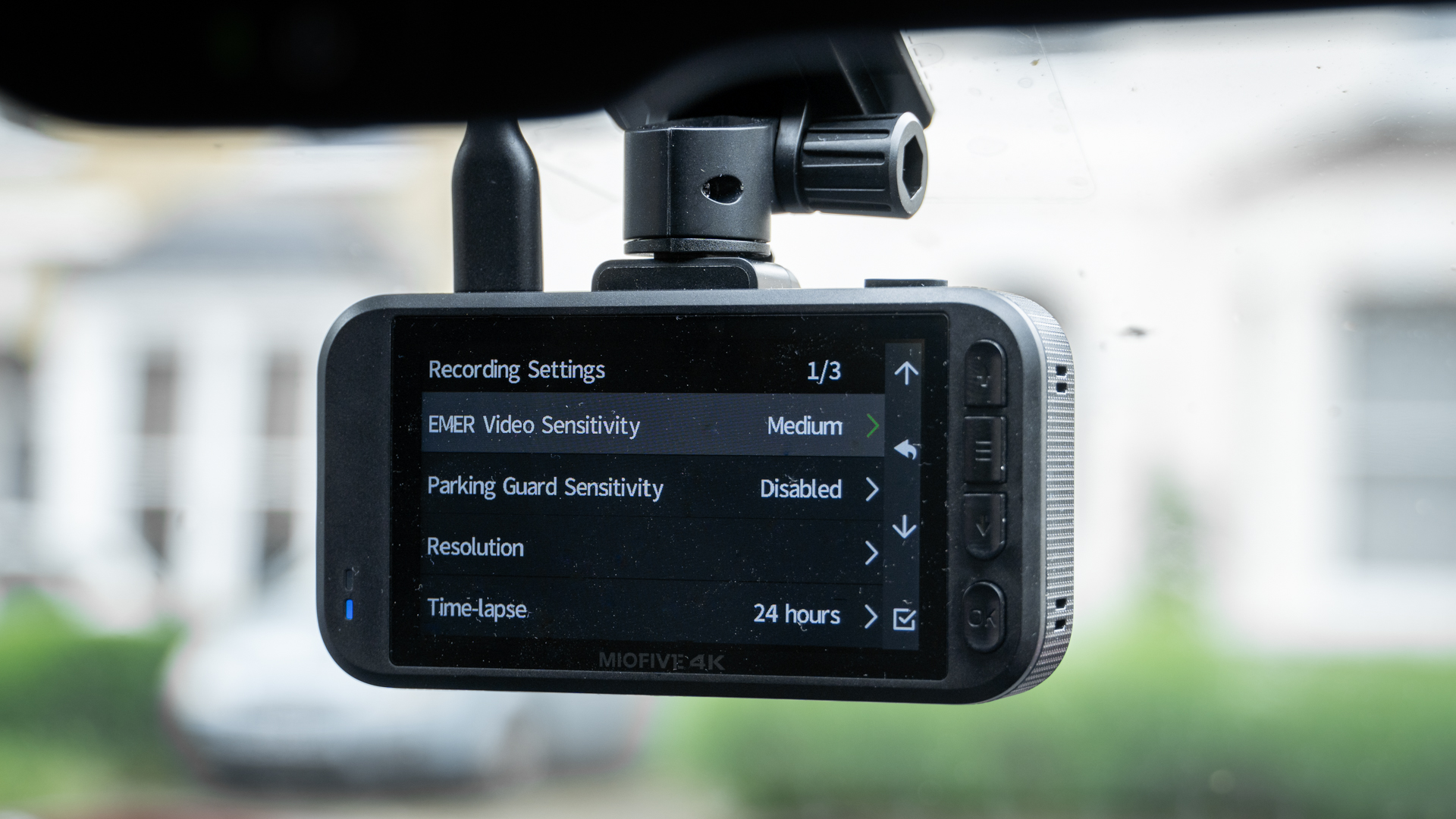
Another small criticism I have is with how the horizontal adjustment of the windscreen mount cannot be locked into place. The vertical adjustment can, thanks to an integrated screw that can be tightened to stop the camera moving up or down, but it’s free to move left or right. This tends not to happen while driving, but could potentially be knocked out of place.
The S1 is powered via a USB-C cable and 12V plug adaptor. These are both included in the box, along with a much shorter USB-C to USB-A cable for transferring recordings to your computer. Alternatively, footage can be sent via 5GHz Wi-Fi to the Miofive smartphone app. Each one-minute, circa-250 MB file takes around 20 to 30 seconds to transfer to the phone.
Installing the Miofive S1 is nice and easy. Simply attach the windscreen mount to the camera, then apply one of the windscreen stickers to your car and stick the mount to that using the integrated adhesive pad. You can use the live view function of the smartphone app to make sure the camera has the right view before sticking it into place.
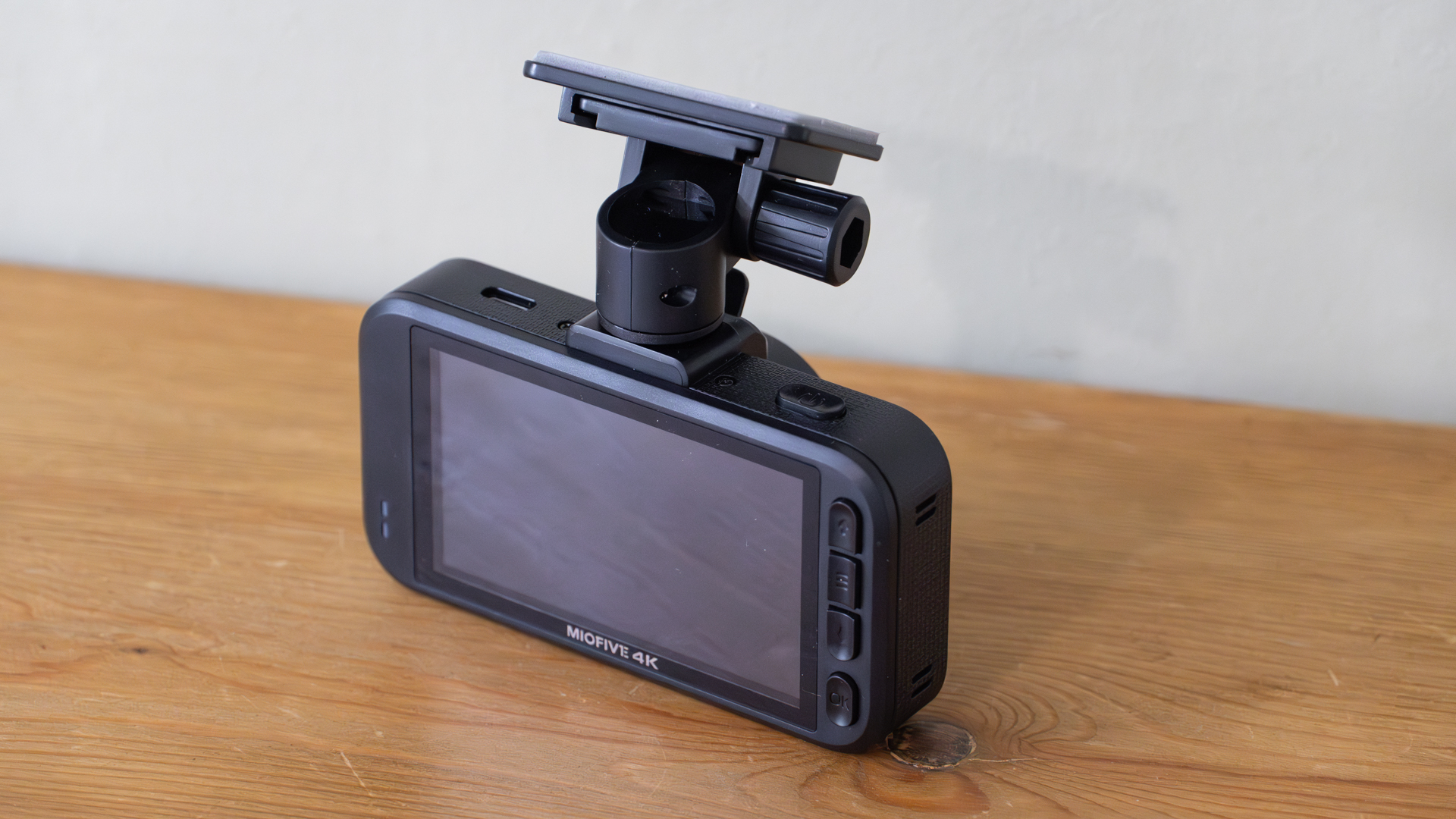
Miofive S1: Performance
All too often, budget 4K dash cams struggle to live up to their high-resolution promise. Not so, the Miofive S1. I was mightily impressed with the video quality, which packed plenty of detail and none of the grainy noise low-priced dash cams often suffer with.
If you don’t want to record in 4K, the options of 2K (2560 x 1440) and Full HD (1920 x 1080) are also available, but all three shoot at 30 frames per second. I’d liked to have seen a 60 or even 120 fps option for the lower resolutions, as the smoother video this creates can sometimes look better than 4K shot at a lower frame rate. Unfortunately the Miofive S1 doesn’t support this, so you’re best sticking at 4K and buying a large-capacity microSD card, since each one-minute segment of video weighs in at about 250 MB.
All that said, 4K with HDR at 30 fps is still smooth enough for this use case, and there’s lots of detail in every recording. Key bits of potential evidence like vehicle registration plates, traffic lights and street signs are all clear and legible. Colors are a little flat, especially on overcast days, and the S1 lacks the high-quality sparkle of pricier systems, like the Nextbase iQ and Viofo A229 Pro, but for dash cam recordings this isn’t really a problem, especially when you consider the price of the Miofive. Similarly, the 140-degree lens isn’t as wide as some rivals, but it still did an acceptable job of recording the full width of my car.
For well under £100 (and under $100, too, at the time of writing), this really is a very good dash cam. It’s quick and easy to set up, and while the app asks you to create an account this isn’t actually necessary. You can set up the dash cam, connect it to your smartphone, download and install the latest firmware, then tweak its settings and transfer video files, all without going through the effort of making an account first. For that alone, Miofive should be applauded.
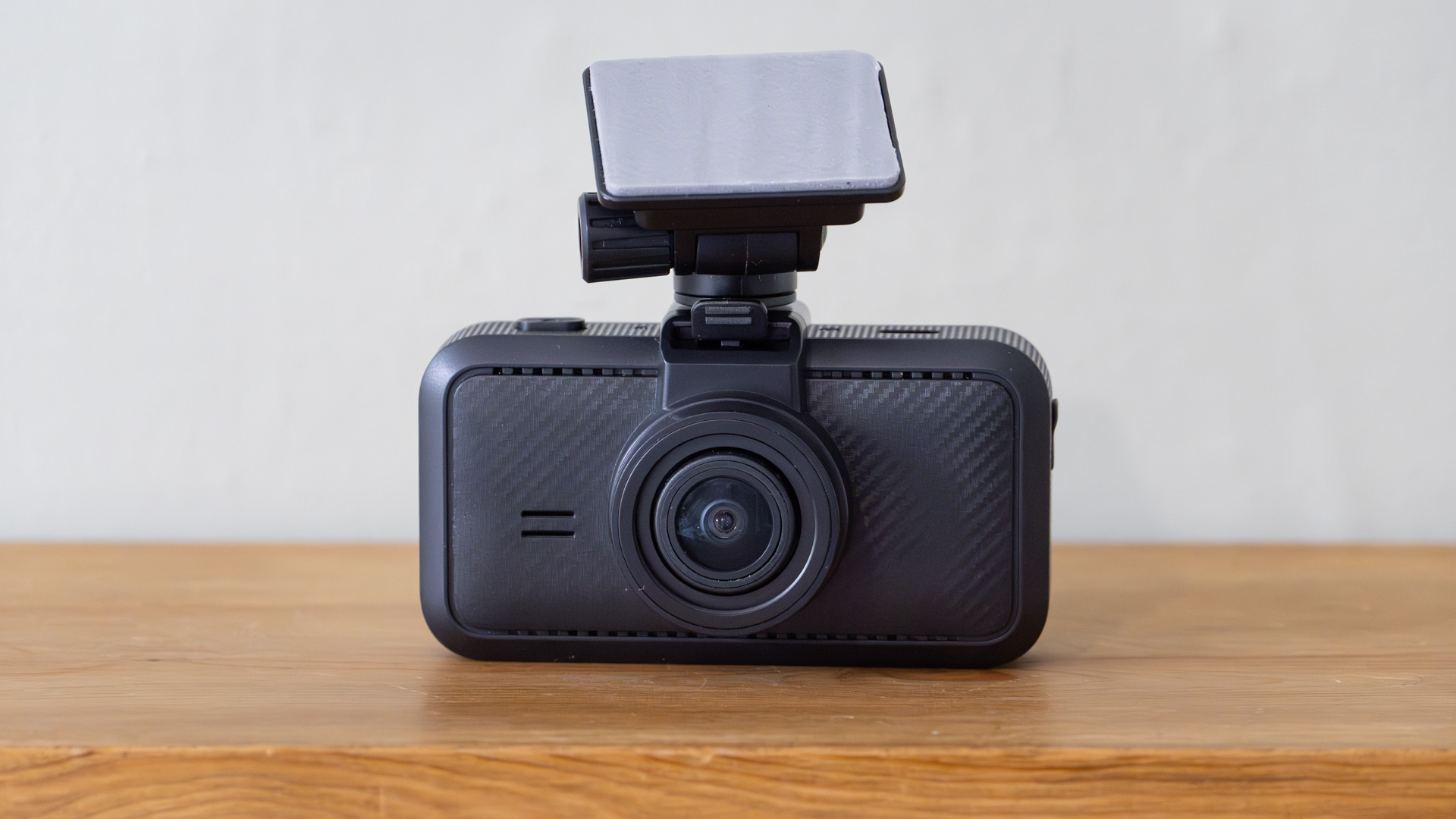
Like other dash cams, the S1 starts recording right after you switch on the vehicle ignition. It then saves footage as files that are each one minute long, until the memory card is full. The files are then gradually overwritten, starting with the oldest first. If it detects a collision, the footage recorded at that moment is saved to a separate, secure folder that is not overwritten.
The camera automatically overlays footage with the time and date, as well as the vehicle speed (calculated using the dash cam’s integrated GPS antenna), and the local timezone. The display is a bit cluttered during recording, but it switches off after about a minute and is no longer a distraction. Handily, a little voice message plays when the screen goes off, stating how the dash cam “continues to serve”. It’s a strange bit of translation, but a handy way of reassuring the driver that it's still recording.
Other features include a parking mode that springs into life when a collision is detected while the car is switched off, but this requires the hardwiring cable sold separately.
Nighttime footage is less sharp, but still impressive for a dash cam at this price point. There’s a good amount of light after sunset and very little grain. Vehicles, road markings and pedestrians are easy to spot, but registration plates are tricky to read.
Lastly, the Miofive S1 has a set of so-called AI features. While I doubt many owners will care for the “fatigue driver alarm” or “harsh driving alert”, the “stop and go reminder” can be useful. It issues a discreet beep if the traffic ahead has started moving and you’re not paying attention. I found the default collision sensitivity to be slightly too sensitive – it was occasionally triggered when driving over a pothole – but through the app it’s easy to turn this down.
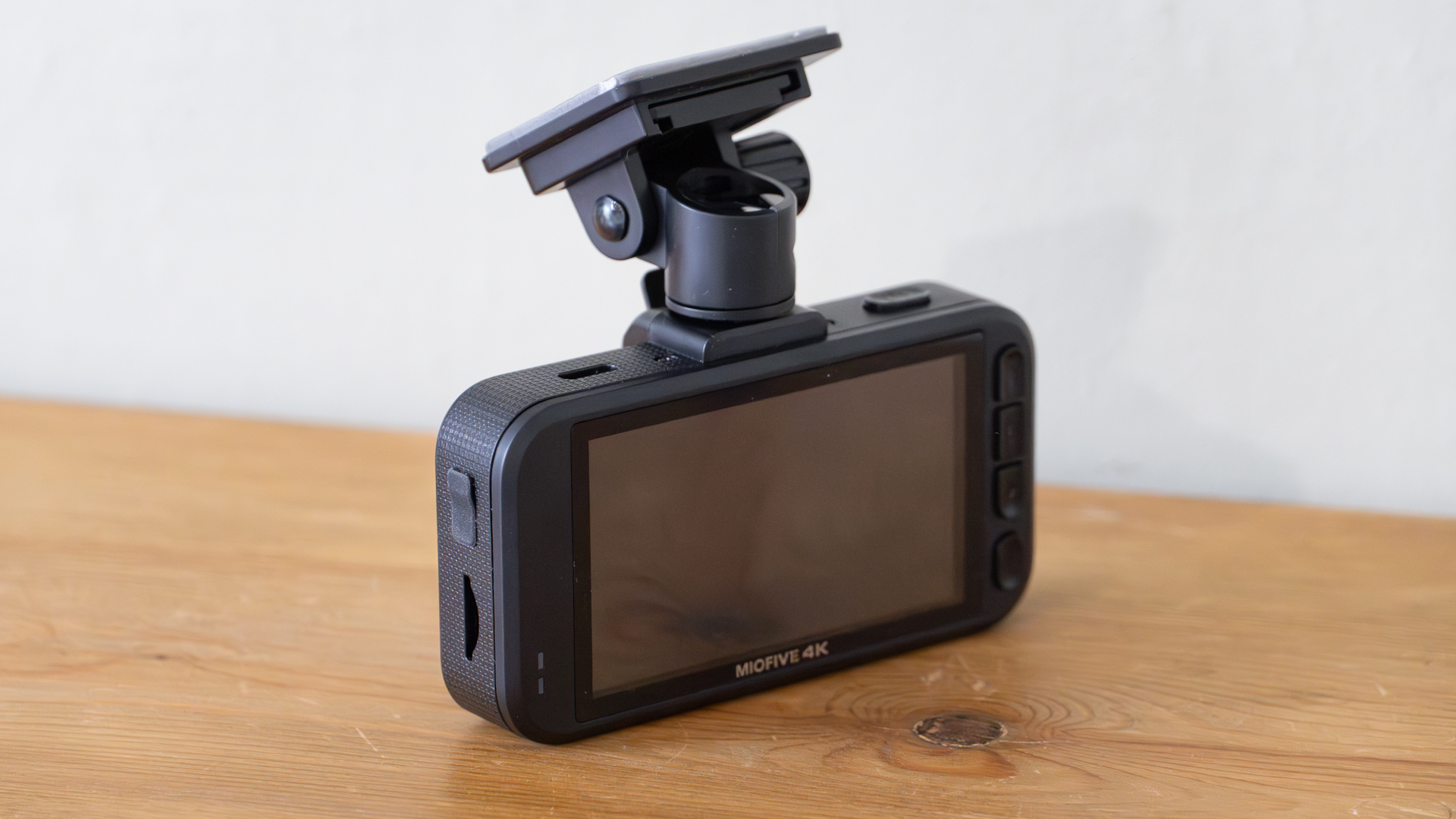
Should you buy the Miofive S1 dash cam?
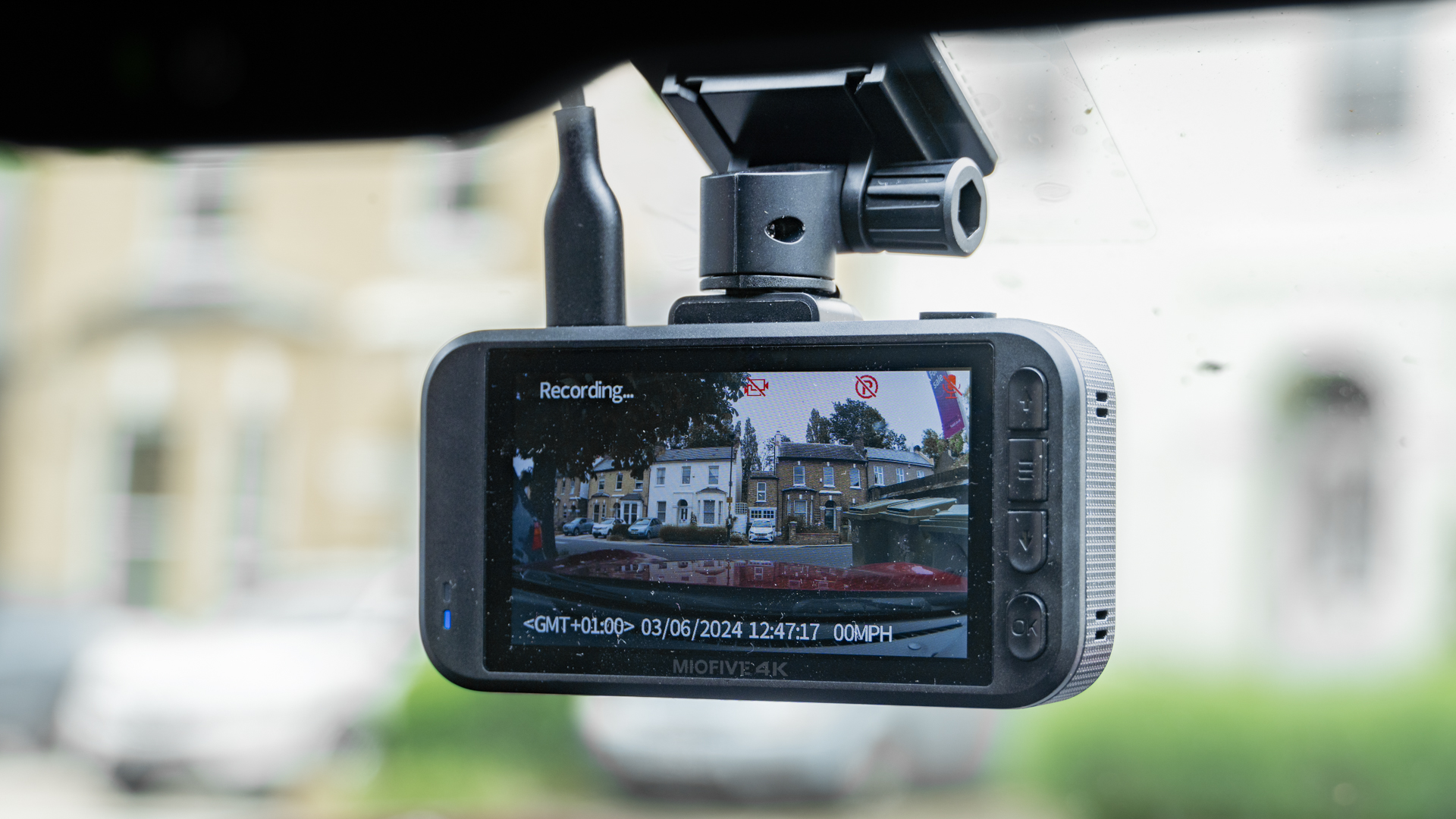
Buy it if...
You want 4K on a budget
If you value 4K at 30 frames per second over Full HD at a higher frame rate, the price of this dash cam is hard to beat. The footage is not only sharp, but suffers from very little noise too.
You want GPS
GPS adds your location and speed to recordings, which can be invaluable when proving when and how an incident occurred.
You prefer your dash cam with a screen
Despite the fairly large 3in display, this dash cam remains relatively compact. The display works well and handily switches off while driving to prevent distraction.
Don't buy it if...
You prefer a higher frame rate
I’d like to have seen the option for Full HD at 60 fps, but unfortunately all the S1’s resolution options record at half that.
You value a compact design
The S1 is relatively small for a dash cam with a screen, but there are more compact options around if you don’t need a display at all.
You’re expecting much from the AI features
‘AI’ branding is everywhere these days, but in this case it doesn’t amount to much. In my view, dash cams can do without driver alerts and warnings about supposed harsh driving.
How I tested the Miofive S1 dash cam
- I installed the dash cam into my own car
- I used it for several journeys during both day and night
- I connected it to my phone and downloaded recordings for appraisal
I installed the Miofive S1 in my own car, set it up via the smartphone app and used it for several journeys. I made sure to record footage during the day and night to see how the camera performs in different lighting conditions, and tweaked the settings – like collision sensitivity and the AI functions – to see what difference they made to the ownership experience. I then transferred footage to both my smartphone and computer for a closer look.
- First reviewed June 2024
Alistair Charlton is based in London and has worked as a freelance technology and automotive journalist for over a decade. A lifelong tech enthusiast, Alistair has written extensively about dash cams and robotic vacuum cleaners for TechRadar, among other products. As well as TechRadar, he also writes for Wired, T3, Forbes, The Independent, Digital Camera World and Grand Designs Magazine, among others.

